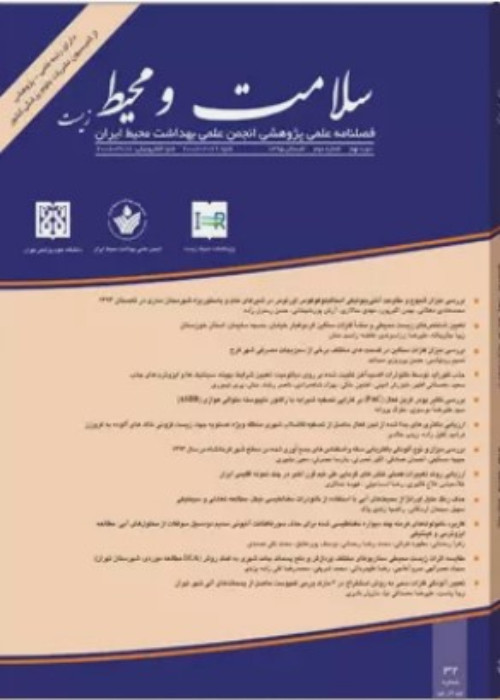Evaluating Potential Contamination of Groundwater by DRASTIC (Case Study: Plain Mahidasht Kermanshah)
Author(s):
Abstract:
Background And Objective
There are major mobile and non-mobile pollution sources due to human activities that can influence aquifers and reduce groundwater quality. Vulnerability assessment is an inexpensive procedure in to identify areas prone to the pollutants. Identification of these sources is essential in water resources management. Mahidasht Plain is one of the important regions of Kermanshah province and plays a significant role in the production of agricultural products. Water supply for agriculture may be at risk due to the indiscriminate withdrawal of groundwater resources of the plains, the recent droughts and potable water requirements. Therefore, analysis and evaluation of the area helps to make better decisions on proper management and control of water pollution.Materials And Methods
Vulnerability, which is defined as the sensitivity of groundwater quality to pollution load, was applied and determined using intrinsic features of the aquifer. In this study, we have studied inherent vulnerability of the Mahidasht aquifer against pollution by using DRASTIC model and GIS. Seven parameters for the zoning of aquifer vulnerability was used in the DRASTIC method, including depth to the water table, net recharge, aquifer material, soil type, topography, impact of vadose zone and hydraulic conductivity. These parameters were prepared as seven layers of information in Arc GIS10 Software. The data collected for the purpose of this study were taken fromwells log, 44 piezometer in the area, pumping experiments and three rain-gauge stations. The layers prepared in Arc GIS10 software were weighted, ranked and eventually integrated.Results
The DRASTIC index calculated for the plain ranged from 34 to 120 units. On this basis and according to the standards listed for DRASTIC index, the aquifer was in a vulnerable group with a low or no risk.Conclusion
DRASTIC model output showed an inherent vulnerability of the aquifer. The model can be used as a primary tool in the development and management of water resources in the future. In addition, this model is not able to produce information about amount and type of pollutants. Therefore, it is recommended to examine the salinity zoning in the future research due to less rainfall and decreasing underground water level and consequently the higher probability of salinity in underground water. Additionally, the domestic and industrial wastewater, sewage irrigation and the fraction used for groundwater recharge should be considered in order to validate the results of Drastic model.Keywords:
Language:
Persian
Published:
Iranian Journal of Health and Environment, Volume:9 Issue: 4, 2017
Pages:
527 to 536
https://magiran.com/p1670251
دانلود و مطالعه متن این مقاله با یکی از روشهای زیر امکان پذیر است:
اشتراک شخصی
با عضویت و پرداخت آنلاین حق اشتراک یکساله به مبلغ 1,390,000ريال میتوانید 70 عنوان مطلب دانلود کنید!
اشتراک سازمانی
به کتابخانه دانشگاه یا محل کار خود پیشنهاد کنید تا اشتراک سازمانی این پایگاه را برای دسترسی نامحدود همه کاربران به متن مطالب تهیه نمایند!
توجه!
- حق عضویت دریافتی صرف حمایت از نشریات عضو و نگهداری، تکمیل و توسعه مگیران میشود.
- پرداخت حق اشتراک و دانلود مقالات اجازه بازنشر آن در سایر رسانههای چاپی و دیجیتال را به کاربر نمیدهد.
In order to view content subscription is required
Personal subscription
Subscribe magiran.com for 70 € euros via PayPal and download 70 articles during a year.
Organization subscription
Please contact us to subscribe your university or library for unlimited access!


